Caste: The Origins of Our Discontents
4.8
-
45,580 ratings
#1 NEW YORK TIMES BESTSELLER • OPRAH’S BOOK CLUB PICK • “An instant American classic and almost certainly the keynote nonfiction book of the American century thus far.”—Dwight Garner, The New York Times
The Pulitzer Prize–winning, bestselling author of The Warmth of Other Suns examines the unspoken caste system that has shaped America and shows how our lives today are still defined by a hierarchy of human divisions—now with a new Afterword by the author.
#1 NONFICTION BOOK OF THE YEAR: Time
ONE OF THE BEST BOOKS OF THE YEAR: The Washington Post, The New York Times, Los Angeles Times, The Boston Globe, O: The Oprah Magazine, NPR, Bloomberg, The Christian Science Monitor, New York Post, The New York Public Library, Fortune, Smithsonian Magazine, Marie Claire, Slate, Library Journal, Kirkus Reviews
Winner of the Carl Sandberg Literary Award • Winner of the Los Angeles Times Book Prize • National Book Award Longlist • National Book Critics Circle Award Finalist • Dayton Literary Peace Prize Finalist • PEN/John Kenneth Galbraith Award for Nonfiction Finalist • PEN/Jean Stein Book Award Longlist • Kirkus Prize Finalist
“As we go about our daily lives, caste is the wordless usher in a darkened theater, flashlight cast down in the aisles, guiding us to our assigned seats for a performance. The hierarchy of caste is not about feelings or morality. It is about power—which groups have it and which do not.”
In this brilliant book, Isabel Wilkerson gives us a masterful portrait of an unseen phenomenon in America as she explores, through an immersive, deeply researched, and beautifully written narrative and stories about real people, how America today and throughout its history has been shaped by a hidden caste system, a rigid hierarchy of human rankings.
Beyond race, class, or other factors, there is a powerful caste system that influences people’s lives and behavior and the nation’s fate. Linking the caste systems of America, India, and Nazi Germany, Wilkerson explores eight pillars that underlie caste systems across civilizations, including divine will, bloodlines, stigma, and more. Using riveting stories about people—including Martin Luther King, Jr., baseball’s Satchel Paige, a single father and his toddler son, Wilkerson herself, and many others—she shows the ways that the insidious undertow of caste is experienced every day. She documents how the Nazis studied the racial systems in America to plan their outcasting of the Jews; she discusses why the cruel logic of caste requires that there be a bottom rung for those in the middle to measure themselves against; she writes about the surprising health costs of caste, in depression and life expectancy, and the effects of this hierarchy on our culture and politics. Finally, she points forward to ways America can move beyond the artificial and destructive separations of human divisions, toward hope in our common humanity.
Original and revealing, Caste: The Origins of Our Discontents is an eye-opening story of people and history, and a reexamination of what lies under the surface of ordinary lives and of American life today.
Kindle
$13.99
Available instantly
Audiobook
$0.00
with membership trial
Hardcover
$17.01
Paperback
$11.68
Ships from
Amazon.com
Payment
Secure transaction
ISBN-10
0593230272
ISBN-13
978-0593230275
Print length
544 pages
Language
English
Publisher
Random House Trade Paperbacks
Publication date
February 13, 2023
Dimensions
5.14 x 1.18 x 7.94 inches
Item weight
14.8 ounces
Popular Highlights in this book
Caste is the granting or withholding of respect, status, honor, attention, privileges, resources, benefit of the doubt, and human kindness to someone on the basis of their perceived rank or standing in the hierarchy.
Highlighted by 17,054 Kindle readers
“No one was white before he/she came to America,” James Baldwin once said.
Highlighted by 12,167 Kindle readers
In the American caste system, the signal of rank is what we call race, the division of humans on the basis of their appearance. In America, race is the primary tool and the visible decoy, the front man, for caste.
Highlighted by 9,734 Kindle readers
Product details
ASIN :
B084FLWDQG
File size :
3109 KB
Text-to-speech :
Enabled
Screen reader :
Supported
Enhanced typesetting :
Enabled
X-Ray :
Enabled
Word wise :
Enabled
Editorial Reviews
“Magnificent . . . a trailblazing work on the birth of inequality . . . Caste offers a forward-facing vision. Bursting with insight and love, this book may well help save us.”—O: The Oprah Magazine
“This book has the reverberating and patriotic slap of the best American prose writing. . . . Wilkerson has written a closely argued book that largely avoids the word ‘racism,’ yet stares it down with more humanity and rigor than nearly all but a few books in our literature. . . . It’s a book that changes the weather inside a reader.”—Dwight Garner, The New York Times
“A surprising and arresting wide-angle reframing . . . Her epilogue feels like a prayer for a country in pain, offering new directions through prophetic language.”—Bilal Qureshi, The Washington Post
“A transformative new framework through which to understand identity and injustice in America.”—Justin Worland, Time
“Magisterial . . . Her reporting is nimble and her sentences exquisite. But the real power of Caste lies tucked within the stories she strings together like pearls. . . . Caste roams wide and deep, lives and deaths vividly captured, haloed with piercing cultural critique. . . . Caste is a luminous read, bearing its own torch of righteous wrath in a diamond-hard prose that will be admired and studied by future generations of journalists.”—Hamilton Cain, Minneapolis Star Tribune
“Brave, clear and shatteringly honest in both approach and delivery . . . Extrapolating Wilkerson’s ideas to contemporary America becomes an unsettling exercise that proves how right she is and how profoundly embedded into society the caste system is. . . . Her quest for answers frames everything and acts as the perfect delivery method for every explanation.”—Gabino Iglesias, San Francisco Chronicle
“Caste draws heavily on the powerful mingling of narrative, research, and visionary, sweeping insight that made Wilkerson’s The Warmth of Other Suns the definitive contemporary study of African Americans’ twentieth-century Great Migration from the Jim Crow South to northern, midwestern, and western cities. It deepens the resonance of that book (a seemingly impossible feat) by digging more explicitly into the pervasive racial hierarchy that transcends region and time.”—Steve Nathans-Kelly, New York Journal of Books
“Caste will spur readers to think and to feel in equal measure.”—Kwame Anthony Appiah, TheNew York Times Book Review
“Wilkerson’s book is a powerful, illuminating and heartfelt account of how hierarchy reproduces itself, as well as a call to action for the difficult work of undoing it.”—Kenneth W. Mack, The Washington Post
“Should be required reading for generations to come . . . A significant work of social science, journalism, and history, Caste removes the tenuous language of racial animus and replaces it with a sturdier lexicon based on power relationships.”—Joshunda Sanders, The Boston Globe
“[Caste] should be at the top of every American’s reading list.”—Jennifer Day, Chicago Tribune
“An expansive interrogation of racism, institutionalised inequality and injustice . . . This is an American reckoning and so it should be. . . . It is a painfully resonant book and could not have come at a more urgent time.”—Fatima Bhutto, The Guardian
“Full of uncovered stories and persuasive writing . . . Opening up a new bank of language in a time of emboldened white supremacism may provide her readers with a new way of thinking and talking about social injustice. . . . A useful reminder to India’s many upper-caste cosmopolitans . . . that dreams of resistance are just one part of the shared inheritance of the world’s oldest democracy, and the world’s largest.”—Supriya Nair, Mumbai Mirror
“It is bracing to be reminded with such precision that our country was built through genocide and slavery. But Ms. Wilkerson has also provided a renewed way of understanding America’s longest, fiercest trouble in all its complexity. Her book leaves me both grateful and hopeful. I gulped it down.”—Tracy Kidder, Pulitzer Prize–winning author of Mountains Beyond Mountains
“Like Martin Luther King, Jr. before her, Isabel Wilkerson has traveled the world to study the caste system and has returned to show us more clearly than ever before how caste is permanently embedded in the foundation and unseen structural beams of this old house called America. Isabel Wilkerson tells this story in prose that is so beautiful, the only reason to pause your reading is to catch your breath. You cannot understand America today without this book.”—Lawrence O’Donnell
“This enthralling exposé deserves a wide and impassioned readership.”—Publishers Weekly (starred review)
“Similar to her previous book, the latest by Wilkerson is destined to become a classic, and is urgent, essential reading for all.”—Library Journal (starred review)
“This is a brilliant book, well timed in the face of a pandemic and police brutality that cleave along the lines of a caste system.”—Booklist (starred review)
Sample
Chapter 2
An Old House and an Infrared Light
The inspector trained his infrared lens onto a misshapen bow in the ceiling, an invisible beam of light searching the layers of lath to test what the eye could not see. This house had been built generations ago, and I had noticed the slightest welt in a corner of plaster in a spare bedroom and had chalked it up to idiosyncrasy. Over time, the welt in the ceiling became a wave that widened and bulged despite the new roof. It had been building beyond perception for years. An old house is its own kind of devotional, a dowager aunt with a story to be coaxed out of her, a mystery, a series of interlocking puzzles awaiting solution. Why is this soffit tucked into the southeast corner of an eave? What is behind this discolored patch of brick? With an old house, the work is never done, and you don’t expect it to be.
America is an old house. We can never declare the work over. Wind, flood, drought, and human upheavals batter a structure that is already fighting whatever flaws were left unattended in the original foundation. When you live in an old house, you may not want to go into the basement after a storm to see what the rains have wrought. Choose not to look, however, at your own peril. The owner of an old house knows that whatever you are ignoring will never go away. Whatever is lurking will fester whether you choose to look or not. Ignorance is no protection from the consequences of inaction. Whatever you are wishing away will gnaw at you until you gather the courage to face what you would rather not see.
We in the developed world are like homeowners who inherited a house on a piece of land that is beautiful on the outside, but whose soil is unstable loam and rock, heaving and contracting over generations, cracks patched but the deeper ruptures waved away for decades, centuries even. Many people may rightly say, “I had nothing to do with how this all started. I have nothing to do with the sins of the past. My ancestors never attacked indigenous people, never owned slaves.” And, yes. Not one of us was here when this house was built. Our immediate ancestors may have had nothing to do with it, but here we are, the current occupants of a property with stress cracks and bowed walls and fissures built into the foundation. We are the heirs to whatever is right or wrong with it. We did not erect the uneven pillars or joists, but they are ours to deal with now.
And any further deterioration is, in fact, on our hands.
Unaddressed, the ruptures and diagonal cracks will not fix themselves. The toxins will not go away but, rather, will spread, leach, and mutate, as they already have. When people live in an old house, they come to adjust to the idiosyncrasies and outright dangers skulking in an old structure. They put buckets under a wet ceiling, prop up groaning floors, learn to step over that rotting wood tread in the staircase. The awkward becomes acceptable, and the unacceptable becomes merely inconvenient. Live with it long enough, and the unthinkable becomes normal. Exposed over the generations, we learn to believe that the incomprehensible is the way that life is supposed to be.
The inspector was facing the mystery of the misshapen ceiling, and so he first held a sensor to the surface to detect if it was damp. The reading inconclusive, he then pulled out the infrared camera to take a kind of X-ray of whatever was going on, the idea being that you cannot fix a problem until and unless you can see it. He could now see past the plaster, beyond what had been wallpapered or painted over, as we now are called upon to do in the house we all live in, to examine a structure built long ago.
Like other old houses, America has an unseen skeleton, a caste system that is as central to its operation as are the studs and joists that we cannot see in the physical buildings we call home. Caste is the infrastructure of our divisions. It is the architecture of human hierarchy, the subconscious code of instructions for maintaining, in our case, a four-hundred-year-old social order. Looking at caste is like holding the country’s X-ray up to the light.
A caste system is an artificial construction, a fixed and embedded ranking of human value that sets the presumed supremacy of one group against the presumed inferiority of other groups on the basis of ancestry and often immutable traits, traits that would be neutral in the abstract but are ascribed life-and-death meaning in a hierarchy favoring the dominant caste whose forebears designed it. A caste system uses rigid, often arbitrary boundaries to keep the ranked groupings apart, distinct from one another and in their assigned places.
Throughout human history, three caste systems have stood out. The tragically accelerated, chilling, and officially vanquished caste system of Nazi Germany. The lingering, millennia-long caste system of India. And the shape-shifting, unspoken, race-based caste pyramid in the United States. Each version relied on stigmatizing those deemed inferior to justify the dehumanization necessary to keep the lowest-ranked people at the bottom and to rationalize the protocols of enforcement. A caste system endures because it is often justified as divine will, originating from sacred text or the presumed laws of nature, reinforced throughout the culture and passed down through the generations.
As we go about our daily lives, caste is the wordless usher in a darkened theater, flashlight cast down in the aisles, guiding us to our assigned seats for a performance. The hierarchy of caste is not about feelings or morality. It is about power—which groups have it and which do not. It is about resources—which caste is seen as worthy of them and which are not, who gets to acquire and control them and who does not. It is about respect, authority, and assumptions of competence—who is accorded these and who is not.
As a means of assigning value to entire swaths of humankind, caste guides each of us often beyond the reaches of our awareness. It embeds into our bones an unconscious ranking of human characteristics and sets forth the rules, expectations, and stereotypes that have been used to justify brutalities against entire groups within our species. In the American caste system, the signal of rank is what we call race, the division of humans on the basis of their appearance. In America, race is the primary tool and the visible decoy, the front man, for caste.
Read more
About the authors
Isabel Wilkerson
Isabel Wilkerson, winner of the Pulitzer Prize and the National Humanities Medal, is the author the critically acclaimed New York Times bestsellers The Warmth of Other Suns, and Caste: The Origins of Our Discontents.Her first book, The Warmth of Other Suns, tells the story of the Great Migration, a watershed in American history. It won the National Book Critics Circle Award for Nonfiction, the Heartland Prize for Nonfiction, the Anisfield-Wolf Award for Nonfiction, the Lynton History Prize from Harvard and Columbia universities, the Stephen Ambrose Oral History Prize and was shortlisted for both the Pen-Galbraith Literary Award and the Dayton Literary Peace Prize. WARMTH was named to more than 30 Best of the Year lists, including The New York Times' 10 Best Books of the Year, Amazon's 5 Best Books of the Year and Best of the Year lists in The New Yorker, Los Angeles Times, The Washington Post and The Economist, among others. In 2019, TIME Magazine named Warmth to its list of the10 best books of the decade.Her second book, CASTE: The Origins of Our Discontents, explores the unrecognized hierarchy in America, its history and its consequences. Caste became a No. 1 New York Times bestseller, was the 2020 summer/fall selection for Oprah’s Book Club and was longlisted for the National Book Award. It was named to more best of the year lists than any other work of nonfiction. TIME named it the No. 1 nonfiction book of 2020. Publishers Marketplace named it the book of the year across all genres. In 2021, it was the most borrowed nonfiction library book in the United States, according to Quartz Magazine.Wilkerson won the Pulitzer Prize for her work as Chicago Bureau Chief of The New York Times in 1994, making her the first black woman in the history of American journalism to win a Pulitzer and the first African-American to win for individual reporting. In 2016, President Barack Obama awarded her the National Humanities Medal for "championing the stories of an unsung history." She has appeared on national programs such as "Fresh Air with Terry Gross," CBS's "60 Minutes," NBC's "Nightly News," "The PBS News Hour," MSNBC's "The Last Word with Lawrence O'Donnell," “The Daily Show with Trevor Noah,” NPR's "On Being with Krista Tippett," the BBC and others. She has taught at Princeton, Emory and Boston universities and has lectured at more than 200 other colleges and universities across the U.S. and in Europe and Asia.Follow @isabelwilkerson on Instagram and Threads.
Read more
Reviews
Customer reviews
4.8 out of 5
45,580 global ratings
M. Spears
5
It doesn't have to be this way..
Reviewed in the United States on June 7, 2024
Verified Purchase
Wilkerson makes a compelling case for a rethinking of America's racist divide as caste, different in only superficial ways from the caste systems of India and Nazi Germany. She offers a hope that dominant caste members (white Americans) might open their eyes, examine lifelong assumptions and make a decision to reject them in favor of a just and equitable future for all, regardless of accident of birth. For accident is what it is ... no one chooses their birth rank in the artificial caste system and no one has to be ruled by it for life. Each one of us can make the conscious decision to transcend the rigidity of caste in order to be fully human and to embrace the humanity of others. Read this book and encourage others to read it, as well.
Read more
Ricardo Mio
5
There is much here to be learned
Reviewed in the United States on January 20, 2021
Verified Purchase
It seems we live in a caste society. This is the message of "Caste: The Origins of our Discontent" by Isabel Wilkerson, a Pulitzer Prize winning author. She cites a number of sources to support her thesis, the most compelling by historian Nell Irvin Painter, who says simply and succinctly: "Americans cling to race as the unschooled cling to superstition." The author also makes the point that racial prejudice is not healthy. Indeed, she cites clinical evidence that harboring racial hatred can shorten your life, and ultimately kill you. At 388 pages the book is not overly long, and reads quite well. However, as well as the author makes her points, she often overstates the case, with repeated stories that after awhile become tiresome. Having said that there is much here to be learned, and I recommend the book heartily.
Certainly, our nation has been long divided over race, dating back to 1619, when the first slave ship made port in Point Comfort, Virginia, and unloaded about twenty chained Africans, destined for slavery. Up to this point the concept of "white" and "black" people was unknown. The colonies were comprised of Europeans (mostly Englishmen) who did not think of themselves as white. And the arriving African slaves did not think of themselves as black, but as Igbo. Yoruba, Ewe Akan, and Ndebele. White people and black people were concepts that developed over time. Writes the author: "There developed a caste system, based on what people looked like, an internalized ranking, unspoken, unnamed, unacknowledged by everyday citizens even as they go about living their lives adhering to it and acting upon it subconsciously to this day."
She adds, "Caste is not a term often applied to the United States. It is considered the language of India or feudal Europe. But some anthropologists and scholars of race in America have made use of the term for decades." Indeed, the idea of "race", is a recent phenomenon in human history. It dates back to the start of the transatlantic slave trade and thus to the subsequent caste system that arose from slavery.
The word "race" likely derived from the Spanish word "raza" and was originally used to refer to the "caste or quality of authentic horses, which are branded with an iron so as to be recognized," wrote the anthropologists Audrey and Brian Smedley. As Europeans explored the world, they began using the word to refer to the new people they encountered. "Ultimately, the English in North America developed the most rigid and exclusionist form of race ideology," say the Smedleys. "In the American mind (race) was and is a statement about profound and unbridgeable differences (that) conveys the meaning of social distance that cannot be transcended."
Geneticists and anthropologists have long considered race as a manmade invention, with no basis in science or biology. In fact, the term "Caucasian", a label often ascribed to people of European descent, is a word invented by a German professor of medicine named Johann Friedrich Blumenbach, who was so taken with the shape of a human skull he found in the Caucasus Mountains of Russia, that he applied it to the people he believed descended from there and settled in Europe.
About two decades ago, an analysis of the human genome established that all human beings are 99.9 percent the same. Concludes the geneticist J. Craig Venter: "We all evolved in the last 100,000 years from the small number of tribes that migrated out of Africa and colonized the world." Which means the entire racial caste system--the catalyst of hatreds and civil war--was built on what anthropologists now call "an arbitrary and superficial selection of traits," derived from "a few of the thousands of genes that make up a human being."
In other words, it is based on a lie.
As slavery took hold in the Southern colonies, slaveholders began looking to the Bible for justification of their "peculiar institution" and, while conveniently ignoring Jesus's Sermon on the Mount, turned their attention to the Old Testament and learned that back in the Middle Ages some interpreters had described Noah's son, Ham, as bearing dark skin, and thus translated Noah's curse against him as a curse against the descendants of Ham--against all humans bearing dark skin.
They took further comfort from Leviticus, which exhorted them, "Both thy bondmen, and thy bondmaids, which thou shalt have, shall be of the heathen that are around you; of them shall ye buy bondmen and bondmaids." They took as further license to enslave those they considered religious heathens, to build a new country out of the wilderness. Thus, a hierarchy evolved in the New World they created, one that set those with the lightest skin above those with the darkest.
"The curse of Ham is now being executed upon his descendants," wrote Thomas Cobb, a leading Confederate and defender of slavery. "The great Architect had framed them both physically and mentally to fill the sphere in which they were thrown. His wisdom and mercy combined in constituting them thus suited to the degraded position they were destined to occupy."
Writes the author: "The United States and India would become, respectively, the oldest and the largest democracies in human history, both built on caste systems undergirded by their reading of the sacred texts of their respective cultures. In both countries, the subordinate castes were consigned to the bottom, seen as deserving of their debasement, owing to the sins of the past."
It would take a civil war, the deaths of three-quarters of a million soldiers and citizens, the assassination of a president, Abraham Lincoln, and the passage of the Thirteenth Amendment to bring an end to slavery in the United States. Still slavery would live on in a new form of discrimination--white supremacy.
The white supremacists devised a labyrinth of laws to hold the newly freed people on the bottom rung ever more tightly, while a popular new pseudoscience called eugenics emerged to justify the renewed debasement. People on the bottom rung could be beaten or killed with impunity for any breach of the caste system, like not stepping off the sidewalk fast enough--or in trying to vote.
When Hitler and his band of thugs took power in Germany and focused their hatred toward European Jews, who should they turn their attention to for guidance? To the discriminatory race laws of the Jim Crow south. According to Yale legal historian James Whitman, in debating "how to institutionalize racism in the Third Reich, the Nazis began by asking how the Americans did it."
PUTTING AN END TO CASTE
Writes the author: "The caste system in America is four hundred years old and will not be dismantled by a single law or any one person, no matter how powerful. We have seen in the years since the civil rights era that laws, like the Voting Rights Act of 1965, can be weakened if there is not the collective will to maintain them . . .
"Caste is a disease, and none of us is immune. It is as if alcoholism is encoded into the county's DNA, and can never be declared fully cured. It is like a cancer that goes into remission only to return when the immune system of the body politic is weakened . . .
"To imagine an end to caste in America, we need only look at the history of Germany. It is living proof that if a caste system--the twelve-year reign of the Nazis--can be created, it can be dismantled. We make a serious error when we fail to see the overlap between our country and others, the common vulnerability in human programming, what the theorist Hannah Arendt called "the banality of evil."
"What's most disturbing about the Nazi phenomenon," writes philosopher David Livingston Smith, "is not that the Nazis were madmen or monsters. It is that they were ordinary human beings."
Note: While preparing this review, I came across this quote by Nelson Mandela: "No one is born hating another person because of the color of his skin or background or his religion. People must learn to hate, and if they can learn to hate, they can learn to be taught to love, for love comes more naturally to the human heart than its opposite." Mandela, it will be remembered, was elected as South Africa's first black head of state. Under his watch, the government focused on dismantling the legacy of caste (a.k.a. apartheid) by tackling institutionalized racism and fostering racial reconciliation.
Read more
165 people found this helpful
David Judson
5
‘Caste,’ an election and the resonance of racism below the surface of liberal, progressive America
Reviewed in the United States on November 16, 2020
Verified Purchase
Review: Caste– The Origins of Our Discontents, by Isabel Wilkerson, 2020, 475 pp., Random House, original published at Urbanitus.com
As the razor-edged finale to a presidential election riven by ambiguity reaches its conclusion, one overarching reality will endure in stark clarity: the bi-polar, cultural disease dividing America into two angry and unforgiving camps.
Rivers of words diagnosing the malady are fast becoming analytical torrents. Recrimination and reaction to its implications are beginning and will accelerate. As with the companion pandemic that has overlaid this red and blue-hued socio-political plague, experts and historians will parse the origins for generations to come.
The rest of us, meanwhile, can do something more immediate. We can read Caste – The Origins of Our Discontents by Isabel Wilkerson, a book published just in August that reorders most of the prisms through which conservatives and liberals alike think about America in its 244th year. Even if not intended as such, this work of anthropology, sociology, psychology, political science, philosophy and history is a deep well of insight, a primer even, into the dynamics that animated the just-concluded vote, and that will surely animate its aftermath.
Implicitly, this book is also about cities, the spaces where the global issues of this moment are being most profoundly tested, from climate change to shelter to migration to policing. It is also in cities, from Austin to Amsterdam to Abuja, where we might hope that the twisting kaleidoscope of a fast-urbanizing world will transform the divisions of caste into a mosaic of equality.
On one level, Caste is about race and racism, an exploration of America’s original sin of slavery that haunts us today in virtually all of our institutions. But race and racism both have a predecessor that we need to better understand if we are to effectively confront the stubborn and subtle resonance of racism below the surface of so much of what passes for progressive rhetoric.
How can Austin, for example, be both the most avowedly liberal city in Texas and the most sharply segregated? A large measure of the answer might be found in that predecessor of race and racism, this phenomenon of caste and casteism.
In fact, the absurd concepts of race and racism are effectively creations of caste, argues Wilkerson. With this insight in hand, she builds on other recent work, going deeply and broadly into a larger realm that connects our history to that of the anti-Semitism in the 1930s that led to the Nazi Holocaust, and to the millennia old caste system of India that brutally stratifies that country today. In the process, Caste expands upon the seminal work of other recent efforts such as last year’s Pulitzer-winning 1619 Project of the New York Times Magazine, and the new book revealing the sanitization of the 1950s and 60s civil rights movement, The Sword and the Shield – The Revolutionary Lives of Malcolm X and Martin Luther King Jr. by historian Peniel Joseph.
But Wilkerson also takes her readers backwards to pioneering scholarship in the early 20th Century South by the the Black anthropologist Allison Davis in the 1930s and on to America in the 1940s with the work of Gunnar Myrdal, the Swedish economic sociologist and Nobel laureate who penned the 1944 classic book An American Dilemma: The Negro Problem and Modern Democracy. Weaving this tapestry of history and globe-spanning research together, Wilkerson delivers her own pioneering illustration of how tribal hatreds weaken and impoverish victim and victimizer alike — along with all bystanders.
‘None of us are ourselves’
“It was in the making of the New World that Europeans became white, Africans black, and everyone else yellow, red, or brown. It was in the making of the New World that humans were set apart on the basis of what they looked like, identified solely in contrast to one another, and ranked to form a caste system based on a new concept called race. It was in the process of ranking that we were all cast into assigned roles to meet the needs of the larger production,” Wilkerson writes. “None of us are ourselves.”
It’s not that Wilkerson neglects the horrors of slavery, or for that matter Nazi evil or Brahmin brutality and domination. From castration of slaves to President Andrew Jackson’s horseback riding with bridal reins made from Native American flesh, to lynchings continuing well into the 20th Century, there is little horror that escapes Wilkerson’s gaze. But it is the subtler and more pernicious diffusion of caste into our relationships, our rules of engagement with one another – and ultimately our national politics – that make Caste indispensable to understanding our own cultural wars and the deepening collateral damage.
“Americans of today have inherited these distorted rules of engagement whether or not their families had enslaved people or even been in the United States,” Wilkerson writes. “Slavery built the man-made chasm between blacks and whites that forces the middle castes of Asians, Latinos, indigenous people, and new immigrants of African descent to navigate within what began as a bipolar hierarchy.”
Wilkerson takes a vivid example from the March 2018 series of bombings in Austin, Texas that killed two people and injured six over 20 days. The first to die was 39-year-old Anthony House, a project manager living in East Austin, killed after he picked up a package that exploded on his porch. Because House was Black, police initially suspected the case might be drug-related or that House might even have accidentally detonated the bomb himself.
“Based on what we know right now, we have no reason to believe this is anything beyond an isolated incident that took place at this residence and in no way this is linked to a terroristic attack,” then-Interim (now permanent) Police Chief Brian Manley told reporters.
Some ten days later, that theory gave way to presumption of a hate crime when another Black and a Latina resident of East Austin, 17-year-old Draylen Mason and 75-year-old Esperanza Herrera, died as they picked up similarly disguised bombs left on their porches. But it was only after two White men in West Austin triggered a bomb by tripwire and were critically injured six days later, and two days after that when a bomb exploded at a FedEx warehouse, that the investigation began to suspect domestic terrorism. That brought in the help of 500 federal agents and the “police now raced at warp speed,” Wilkerson notes. Ultimately police cornered the 23-year-old suspect, Mark Conditt, who blew himself up as they closed in.
Manley did finally label Conditt a terrorist, but Wilkerson asks, what might have been the outcome if the caste-blinded police had warned the public initially about the threat of randomly dropped packages instead of waiting 10 days?
“People can come to disregard the predicaments facing people deemed beneath them, seeing their misfortunes as having no bearing on their own lives, seeing whatever is happening to them as, say, a black problem, rather than a human problem, unwittingly endangering everyone.”
‘The dominant caste around which all other castes revolve’
It is this all but hidden taxonomy of rank and status guiding our actions, in ways most of us are scarcely aware of, that is the great choreographer of decision-making in American and other societies, Wilkerson argues of her research that took her to Berlin to understand the rankings of “Aryan purity” in the 1930s and throughout India to examine the workings of India’s intricately complex caste system today.
“A caste system centers the dominant cast as the sun around which all other castes revolve and defines it as the default-setting standard of normalcy, of intellect, of beauty, against which all others are measured, ranked in descending order by the physiological proximity to the dominant caste,” she writes.
This understanding of caste explains why recent immigrants from Africa have reversed the practice of earlier “middle castes,” say Italians or Jews from Eastern Europe, who quickly changed their surnames to assimilate as quickly as possible into the dominate Anglo-Saxon caste; Binghenheimer becoming Bingham or Rossellini becoming Ross.
Immigrants from Ghana or Grenada cannot so easily join the presumed dominant caste for the obvious reasons of skin color. So they must take pains to isolate themselves from the bottom-rung of African-Americans, maintaining distinctive accents, dress and names, or in some cases even discouraging their children not “to act like African Americans.��”
Wilkerson quotes the late and greatly esteemed Indian jurist B.R. Ambedkar, who rose from his Dalit, or “Untouchable,” origins to become the author of India’s constitution and anti-caste campaigner: … “each caste takes its pride and its consolation in the fact that in the scale of castes, it is above some other caste.”
Which, moving toward today’s political reality in America, explains why so many journalists and analysts were, and remain, blindsided by Donald Trump’s support from working class Whites in 2016 and now. And perhaps it is insight into his surprise support in 2020 from some Black males despite support of White supremacists, or the votes for Trump from Latinos in Texas’ Rio Grande Valley despite the wall, the family separations, and the ugly characterizations of migrants.
“The liberal take was that working class whites have been voting against their interest in supporting right-wing oligarchs, but that theory diminishes the agency and caste-oriented principles of the people,” Wilkerson says. “Many voters, in fact, made an assessment of their circumstances and looked beyond immediate short-term benefits and toward, from their perspective, the larger goals of maintaining dominant caste status and their survival long term.”
And while caste may take its largest toll on African Americans, through unending police brutality, biased outcomes in court, and the world’s highest incarceration rates, its insidiousness leaves few untouched. It is in fact the dictates of caste that lock all Americans into the worst health care and basic education systems of any developed nation and a growing chasm of income inequality that rewards 1 percent of Americans with more than all the assets of the entire bottom half.
In short, our caste consciousness has led us to a point where for some a place high in the American caste system has more value than health insurance, a living wage, political instability, protection from a virus, or threats from overseas.
‘The susceptible group sees itself in the narcissistic leader’
And in a kind of analytical crescendo, Wilkerson brings that dissection of caste right up to what might prove the most durable understanding of the headlines of recent days. For this she turns to the work of Eric Fromm, the late German Jewish psychologist who saw firsthand, and later wrote about, the connection between the pain, anxiety and insecurity of 1920s Weimar Germany and how it fed narcissistic narratives of racial greatness and superiority among the German population that were to nurture and sustain their embrace of a narcissistic leader.
“The right kind of leader can inspire a symbiotic connection that supplants logic,” Wilkerson argues. “The susceptible group sees itself in the narcissistic leader, becomes one with the leader, sees his fortunes and his fate as their own.”
She quotes Fromm himself, who fled the Nazis to the United States and who died in 1980: “The greater the leader, the greater the follower… The narcissism of the leader who is convinced of his greatness, and who has no doubt, is precisely what attracts the narcissism of those who submit to him.”
A single book will hardly resolve the ancient hatreds and divisions of caste and all the destruction they have wrought. A single election, whatever the outcome, will hardly heal the fears and resentments of a dominant caste that have created a society turned against itself. But without the promise of both, as wildfires burn, glaciers melt and cities erupt in violent standoffs, hope for the species seems slight.
“A world without caste,” suggests Wilkerson, “would set everyone free.”
Read more
220 people found this helpful
Don’t bother
5
This book has changed my life, and how I view the world
Reviewed in the United States on May 9, 2024
Verified Purchase
I cannot express how amazing this book is. I saw the film Origins in the cinema 3 times, and cried each and every time. I think every HUMAN should read this book. It should be taught in schools and should be required by every person.
I have random conversations with people on the train, in coffee shops, and at work. This book will change you, how you view our country, and our world. After reading this book, I can say that, Yes, I am innately racist. But because of this book, every day I challenge myself to not think that way, to challenge myself to understand, We live in a world that would rather us be racist and believe in a caste system, than to lift each other up. To support and cheer each other.
Please read this book. Share this book and what you learn from it. It can change the world!
Read more
2 people found this helpful
Placeholder
4
Aryan influence vis-a-vis India
Reviewed in the United States on October 15, 2020
Verified Purchase
This is another good one from Ms. Wilkerson. She writes about caste from the perspective of three countries; United States, Germany and India. I don’t know why she did not include the treatment of Aboriginals in Australia. Truth hurts and this is a disturbing book to read about the hopelessness and the unimaginable inhumane treatment of Blacks in the US, Jews in Germany and Dalits in India. While here in America, people of color especially blacks continue to suffer, she writes quite a bit concerning how Germany is presently dealing with the atrocities of the past, but she omits to mention the progress India has made since its independence from colonial rule vis-a-vis the dalits. Yes, she makes fleeting reference to this progress. Today there are around 300 million dalits in India. Caste in India is complex. While in America caste is a deliberately imported happening beginning with slave trade, in India it was forced by the Aryans who came in from central Asia. The tall and fair skinned Aryans, the hardy nomads of the grasslands who called themselves ‘noble ones’ entered India around 1500 BCE through the Hindu-Kush mountains in northwest India. Before this invasion, a well-developed, prosperous and widespread civilization dating back to third millennium BCE of the Indus Valley in the twin cities of Harappa and Mohenjo-daro (now both are being excavated in the present day Pakistan) of dark skinned people called Dravidians was already flourishing. With the Aryan invasion began the clash of cultures. The Aryans brought with them the oldest living language ‘Sanskrit’ which they meant ‘language of the cultured’ and the scriptures called the ‘Vedas’ which they said were god made, (‘shrutis.’) They considered the dark skinned conquered Dravidians inferior to them. For socio-economic purposes, the Aryans divided the society probably based on the color of the skin; priests, warriors, traders and workers and said they were God sanctioned and through their man made (smritis) book of law ‘Manusmiriti’ institutionalized this caste system. The first three in the system belong to the upper caste which the Aryans kept for themselves. The last one, the workers or laborers called ‘sudras’ of dark skin were classified as belonging to the lower caste and it is believed that they were the locals conquered by the Aryans. Manusmiriti is very harsh in the treatment of the sudras. Below the sudras are dalits who did menial work such as cleaning lavatories, sweeping roads, burying the dead etc., were kept outside this system and suffered even more than sudras. Due to the fault lines of caste in Hinduism, three great religions ‘Buddhism’ ‘Sikhism’ and ‘Jainism’ rose in India. To escape prejudices and discrimination from everywhere including from their own communities, dalits tried to find social acceptance by converting to Buddhism, Christianity, Sikhism and Islam. Ms. Wilkerson writes about the brilliant Bhimrao Ambedkar, a dalit who fought admirably for their rights. He was the architect of the constitution of India and dalits were brought into the mainstream under Article 341 of the Indian constitution and listed as ‘Scheduled Castes’ that afforded them special benefits under affirmative action aka ‘reservations’ initiatives of the government they so deserved thereby including them in the Hindu fold. Caste discrimination was outlawed. Although Ambedkar was a dalit, he was made the first Minister of Law and Justice of independent India. He embraced Buddhism helping mass conversions of dalits. Many reformers rose within Hinduism. The Bhakti movement that developed long ago was precisely to address the inequities in the Indian caste system including those pertaining to the untouchable dalits. Mahatma Gandhi during his freedom struggle gave the untouchables a new name ‘Harijan’ meaning ‘Children of God’ and brought over seventy million of them into mainstream Indian life. Any reference to the current caste system in India should be judged from the footmarks of history and the sufferings of the Hindus as a whole under 400 plus years of foreign occupation, first from the muslim invaders and secondly by the European British colonial masters. While the muslims were engaged in forced mass conversions of Hindus to Islam, the British exploited the divisions within the society and bankrupted the country not only economically but even stole the dignity of the people to their advantage. According to the erudite member of the Congress party Shashi Tharoor, the British rule reduced India from its glory of one of the richest countries in the world to the poorest one and its claims of bringing development and political unity was false. Under the British, India in 1858 was one of the richest countries in the world with a share of 23 percent of global GDP. When they left in 1947 the GDP was just around 4 percent. In the meantime to add insult to injury, the caste based society started slowly changing to ‘class’ based society which is still happening today. Only since 70 years after India gained independence from the British and inherited an empty shell of a once proud and prosperous nation, efforts are continuing by successive governments to address the inequities in the system to rebuild a country of glory and tolerance that it was once. While here in the US even today Blacks are being suppressed, in India affirmative actions and more enshrined in its constitution are continuing to improve the lot of the ‘dalits.’ The current President of India, Ram Nath Kovind holds highest office and belongs to a caste that is considered lower than the lowest amongst the dalits. Another dalit K.R. Narayanan was elected as the president in 1997. Despite the fact that officially the caste system was constitutionally abolished in 1950 when India became a republic, it still has major influence in contemporary Indian society. Yes, dalits are still suffering and no doubt more should be done. But progress is being made to address their plight at many levels. A number of non-governmental organizations are actively involved to right the wrong done in the past. Also, there is a noticeable change in the attitude of the younger people towards the dark skinned sudras and dalits. Many even do not know a thing like manusmriti existed. However, India still suffers from its cultural fixation with whiter skins. There are deeply rooted prejudices around skin color. But, the Black Lives Matter movement here in the US has inspired debate. Evidences of tolerance abound. There is a backlash against multibillion dollar skin whitening creams, powders and lotions marketed for example as Hindustan Uniliver’s ‘Fair & Lovely.’ They cleverly rebranded it as ‘Glow & Lovely.’ It is interesting to note there are controversies relating to the invasion of the Aryans. Many believe that Aryans were indigenous Indians and the invasion theory is is just a myth. Hindering the progress is the issue of conversion. Taking advantage of the plight of the dalits, organizations associated with Christianity and Islam are very active in converting them to their religion thereby complicating the divisions within the society. The religions of Islam and Christianity are considered foreign and hence converted Muslim and Christian dalits are not afforded the same benefits enjoyed by converted Buddhist and Sikh dalits, as Buddhism and Sikhism are considered indigenous. It should be noted that forced mass conversion of Hindus by the Islamic Moghul invaders who ruled the country for over 200 years resulted in the partition of the country with the birth of Islamic Pakistan which itself was further divided thereby giving birth to Islamic Bangladesh. Hindus in India are very much concerned about the possibility of further partition based on religion and are therefore paranoid of conversions. For the benefit of the readers, I wish Ms. Wilkerson devoted some space in the book concerning the history and these efforts in India just as she has vis-a-vis Germany. For this reason I am giving the book a four star. I hope Ms. Wilkerson will use her enormous talent and intellect to write a book on European Colonialism that has devastated countries in Africa and Asia for which they take no responsibility even today.
Read more
140 people found this helpful
Similar Books
Best Sellers

The Great Alone: A Novel
4.6
-
152,447
$5.49

The Four Winds
4.6
-
156,242
$9.99

Winter Garden
4.6
-
72,838
$7.37

The Nightingale: A Novel
4.7
-
309,637
$8.61

Steve Jobs
4.7
-
24,596
$1.78

Iron Flame (The Empyrean, 2)
4.6
-
164,732
$14.99

A Court of Thorns and Roses Paperback Box Set (5 books) (A Court of Thorns and Roses, 9)
4.8
-
26,559
$37.99

Pretty Girls: A Novel
4.3
-
88,539
$3.67
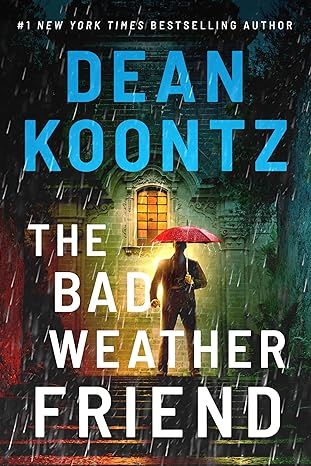
The Bad Weather Friend
4.1
-
34,750
$12.78

Pucking Around: A Why Choose Hockey Romance (Jacksonville Rays Hockey)
4.3
-
41,599
$14.84
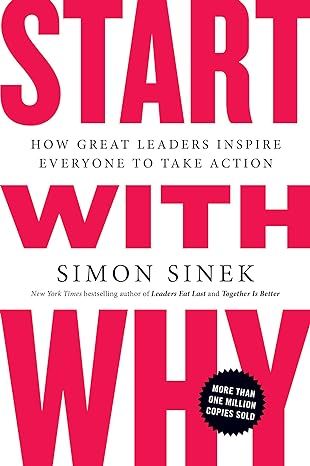
Start with Why: How Great Leaders Inspire Everyone to Take Action
4.6
-
37,152
$9.99
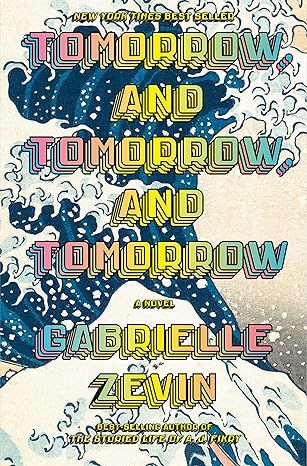
Tomorrow, and Tomorrow, and Tomorrow: A novel
4.4
-
95,875
$13.99

Weyward: A Novel
4.4
-
27,652
$11.99

Tom Lake: A Reese's Book Club Pick
4.3
-
37,302
$15.74

All the Sinners Bleed: A Novel
4.4
-
12,894
$13.55
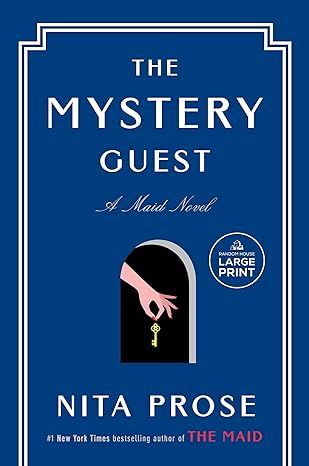
The Mystery Guest: A Maid Novel (Molly the Maid)
4.3
-
9,844
$14.99

Bright Young Women: A Novel
4.2
-
8,485
$14.99
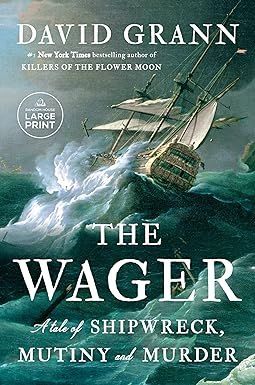
The Wager: A Tale of Shipwreck, Mutiny and Murder (Random House Large Print)
4.5
-
28,672
$14.99
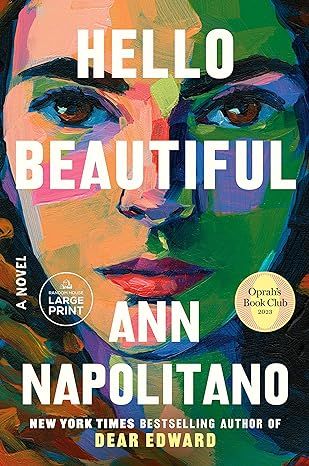
Hello Beautiful (Oprah's Book Club): A Novel (Random House Large Print)
4.4
-
79,390
$14.99
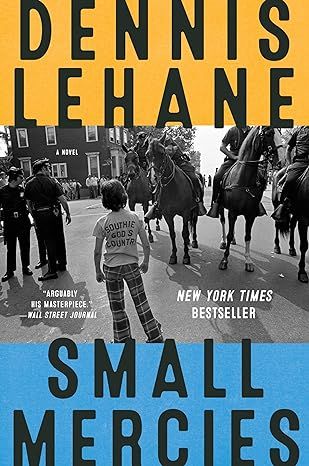
Small Mercies: A Detective Mystery
4.5
-
16,923
$10.00

Holly
4.5
-
31,521
$14.99
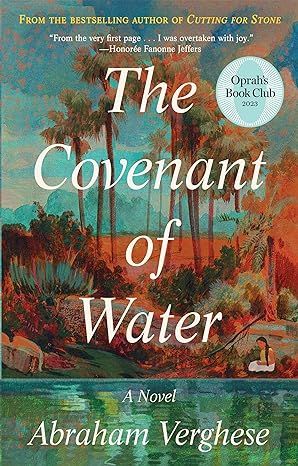
The Covenant of Water (Oprah's Book Club)
4.6
-
69,712
$9.24
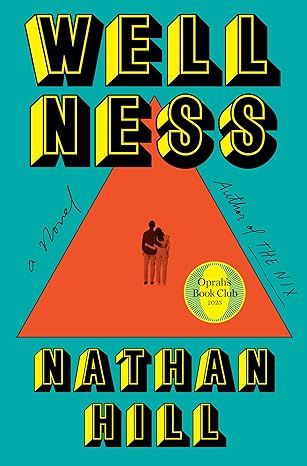
Wellness: A novel
4.1
-
3,708
$14.99
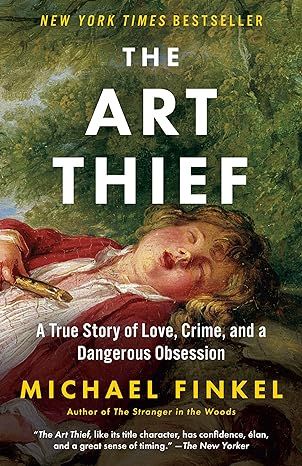
The Art Thief: A True Story of Love, Crime, and a Dangerous Obsession
4.3
-
4,805
$14.99


